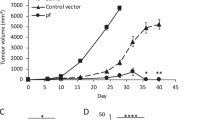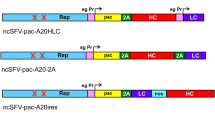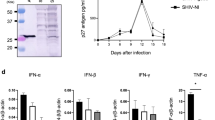Abstract
LEUKAEMOGENIC viruses, such as Friend, Rauscher or Moloney virus, may markedly suppress the immune responses of infected mice, both at the cellular and humoral levels1–10. AKR mice developing spontaneous leukaemia also have a marked suppression of serum antibody formation preceding clinical symptoms11. Several current theories of carcinogenesis suggest that such deficiencies of specific immunological competence may be a necessary but not exclusive prerequisite for tumour development12–16. In this regard, the induction of tumours by viruses other than those associated with murine leukaemia may also depend on an inadequate immune system and/or induction of specific immunological tolerance. Because most tumour viruses induce neoantigens in infected cells, it seems probable that an immunocompetent individual would respond to the virus induced antigens15. Loss of immunological competence could be related to development of the tumours. This study was undertaken to determine if a non-leukaemia DNA tumour virus could affect the immunological responsiveness of experimental animals. For this purpose, SV40 tumour virus was inoculated into newborn hamsters and their subsequent immune response to sheep erythrocytes was determined at the serum and cell level, using the haemolytic plaque assay in agar gel and serological procedures. The responses of non-infected hamsters were determined simultaneously.
This is a preview of subscription content, access via your institution
Access options
Subscribe to this journal
Receive 51 print issues and online access
$199.00 per year
only $3.90 per issue
Buy this article
- Purchase on Springer Link
- Instant access to full article PDF
Prices may be subject to local taxes which are calculated during checkout
Similar content being viewed by others
References
Peterson, R. D. A., Hendrickson, R., and Good, R. A., Proc. Soc. Exp. Biol. and Med., 114, 517 (1963).
Dent, P. B., Peterson, R. D. A., and Good, R. A., Proc. Soc. Exp. Biol. and Med., 119, 969 (1965).
Siegel, B. V., and Morton, J. I., Immunology, 10, 559 (1966).
Siegel, B. V., and Morton, J. I., Proc. Soc. Exp. Biol. and Med., 123, 467 (1966).
Cremer, N. E., Taylor, D. O. N., and Hagens, S. J., J. Immunol., 96, 495 (1966).
Salaman, M. H., and Wedderburn, N., Immunology, 10, 445 (1966).
Odaka, T., Ishii, H., Yamaura, K., and Yamamoto, T., Jap. J. Exp. Med., 36, 277 (1966).
Chan, G., Rancourt, M. W., Ceglowski, W., and Friedman, H., Science, 159, 437 (1968).
Ceglowski, W. S., and Friedman, H., Proc. Soc. Exp. Biol. and Med., 126, 662 (1967).
Ceglowski, W. S., and Friedman, H., J. Immunol., 101, 594 (1968).
Metcalf, D., and Moulds, R., Int. J. Cancer, 2, 53 (1967).
Old, L. J., and Boyse, E. A., Ann. Rev. Med., 15, 167 (1964).
Sjoren, H. O., Prog. Exp. Tumor Res., 6, 289 (1965).
Hellstrom, K. E., and Moller, G., Prog. Allergy, 9, 158 (1965).
Klein, G., Ann. Rev. Microbiol., 20, 232 (1966).
Moloney, J. B., Ann. Rev. Med., 15, 393 (1964).
Goldner, H., Girardi, A. J., Larson, J. M., and Hilleman, M. R., Proc. Soc. Exp. Biol. and Med., 117, 851 (1964).
Jerne, N. K., and Nordin, A. A., Science, 140, 405 (1963).
Author information
Authors and Affiliations
Rights and permissions
About this article
Cite this article
FRIEDMAN, H., GOLDNER, H. Effect of a DNA Tumour Virus on Antibody Forming Cells in Neonatally Infected Hamsters. Nature 225, 455–456 (1970). https://doi.org/10.1038/225455a0
Received:
Revised:
Issue Date:
DOI: https://doi.org/10.1038/225455a0
Comments
By submitting a comment you agree to abide by our Terms and Community Guidelines. If you find something abusive or that does not comply with our terms or guidelines please flag it as inappropriate.



